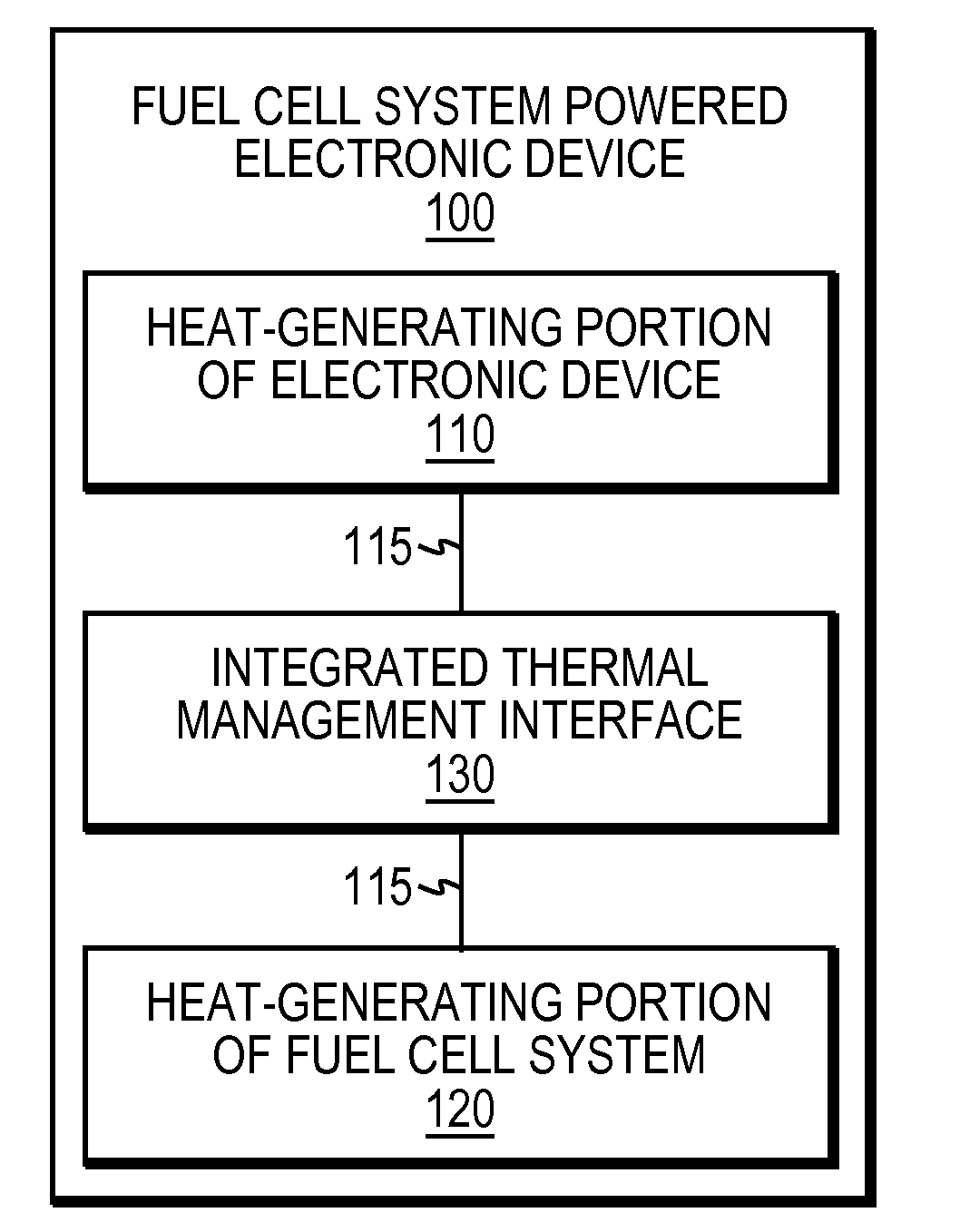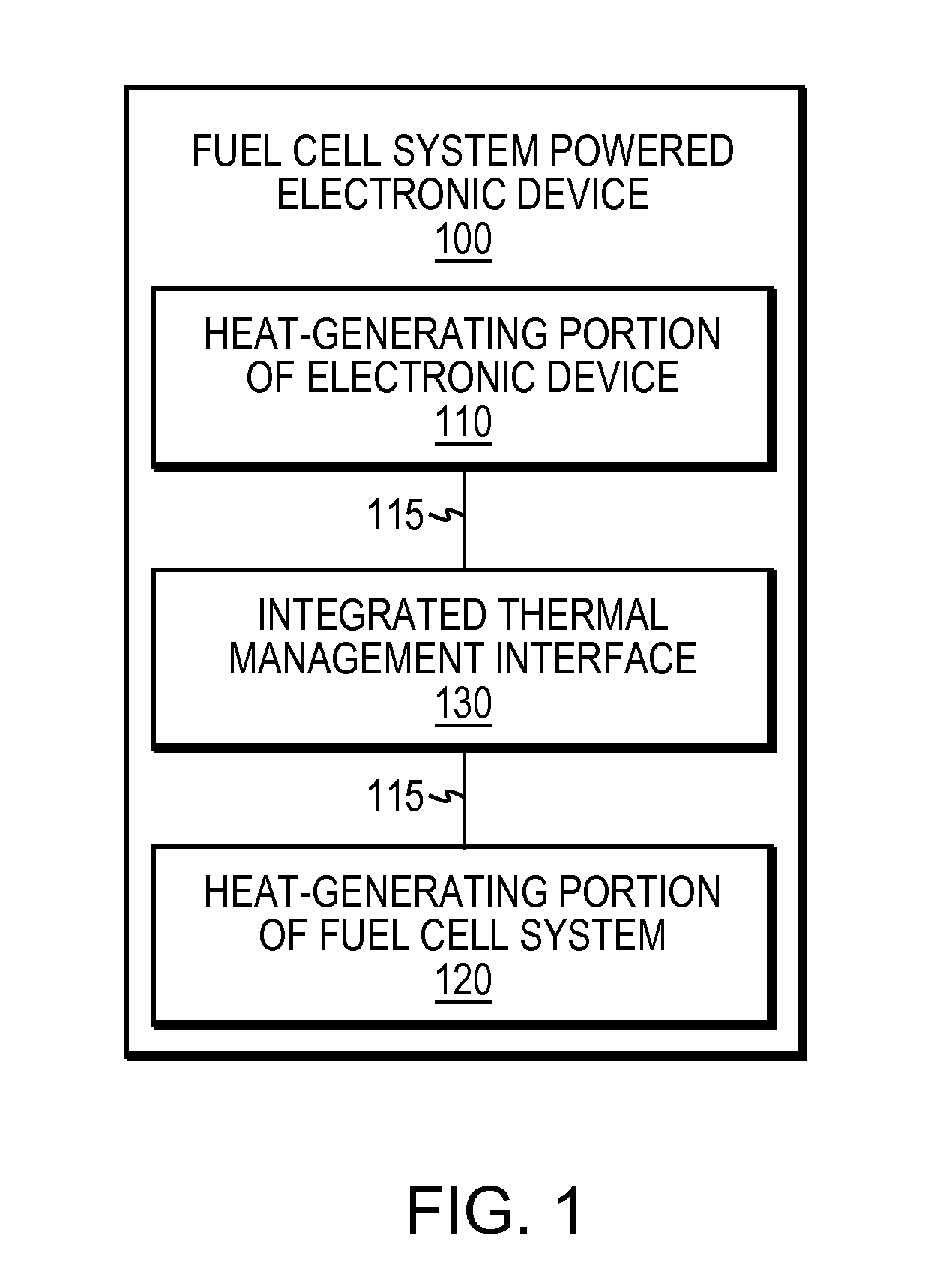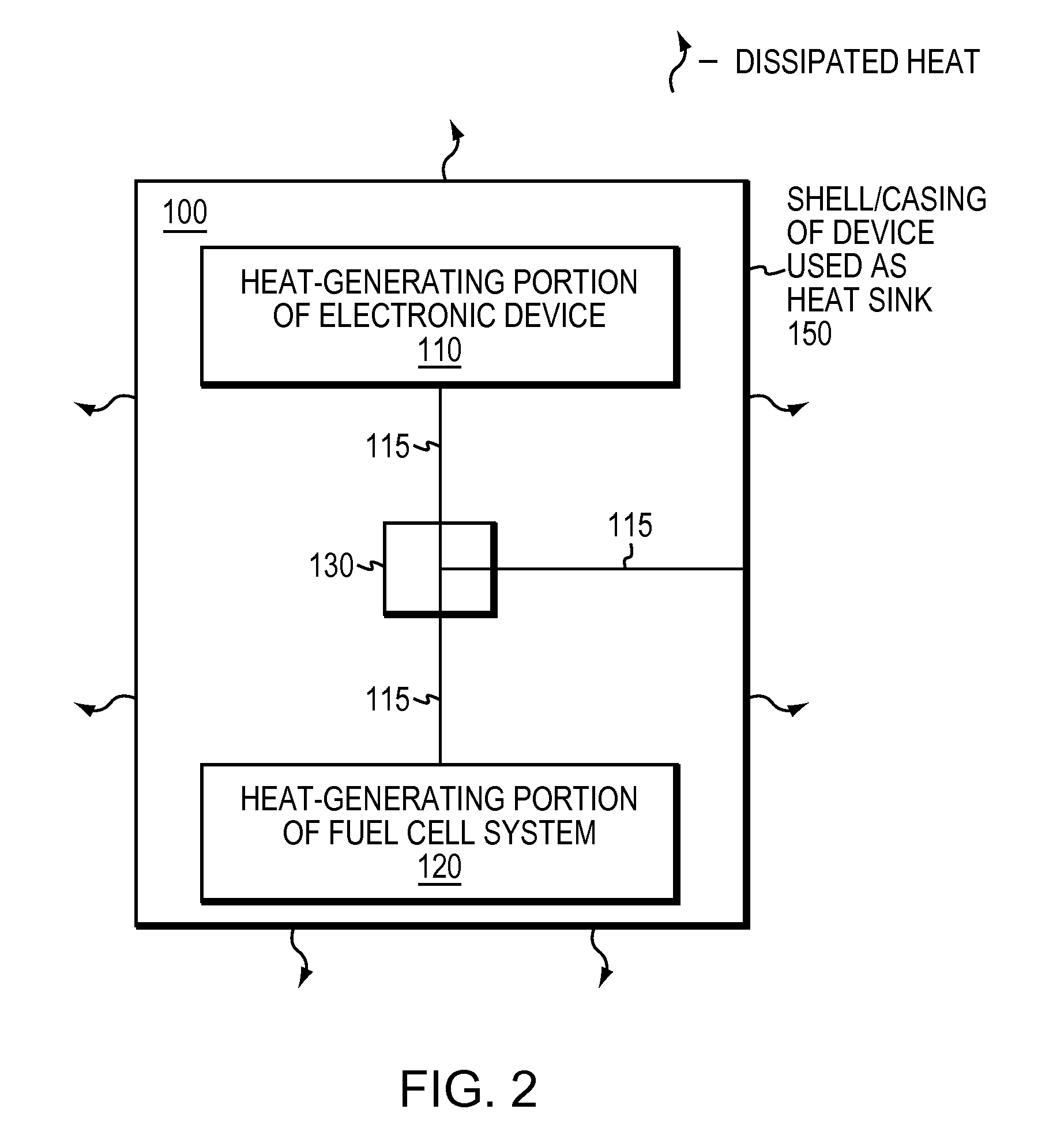Integrated thermal management of a fuel cell and a fuel cell powered device
- Summary
- Abstract
- Description
- Claims
- Application Information
AI Technical Summary
Benefits of technology
Problems solved by technology
Method used
Image
Examples
Embodiment Construction
[0022]FIG. 1 is a simplified schematic block diagram of one embodiment of an electronic device 100 that may be powered by an electrochemical energy conversion device and advantageously used with the present invention. As will be understood by those skilled in the art, the electronic device may have a heat-generating portion 110, such as, e.g., from various processors, power converters, visual displays, or other components that may generate heat during their operation.
[0023]Illustratively, the electrochemical energy conversion device (and heat-generating portion thereof) 120 is a fuel cell system, e.g., a direct oxidation fuel cell, direct methanol fuel cell (DMFC), liquid or vapor feed fuel cell, portable fuel cell, transportable reformer-based fuel cell system, or other electrochemical energy conversion device (including other forms of fuel cells), as will be understood by those skilled in the art.
[0024]Notably, there are many different electrochemical energy conversion devices tha...
PUM
 Login to View More
Login to View More Abstract
Description
Claims
Application Information
 Login to View More
Login to View More - R&D
- Intellectual Property
- Life Sciences
- Materials
- Tech Scout
- Unparalleled Data Quality
- Higher Quality Content
- 60% Fewer Hallucinations
Browse by: Latest US Patents, China's latest patents, Technical Efficacy Thesaurus, Application Domain, Technology Topic, Popular Technical Reports.
© 2025 PatSnap. All rights reserved.Legal|Privacy policy|Modern Slavery Act Transparency Statement|Sitemap|About US| Contact US: help@patsnap.com



